


xxxxxThe English writer Charles lamb is known for his Tales from Shakespeare, a children’s book written in collaboration with his sister Mary, and for his Essays of Elia, a series of witty articles first begun in 1820. In these he recalls commonplace events which had occurred in his lifetime, describing them in a charming, attractive style. Their subject matter was extremely diverse and sometimes fanciful by nature, but he avoided certain topics, such as politics, religion and sex, in order not to disturb or offend. Among these essays were A Dissertation on Roast Pig, Dream Children, Mrs Battle’s Opinions on Whist and The Supernatural Man. He was also a successful literary critic, gaining a reputation for his appraisal of Elizabethan drama in general and Shakespeare’s tragedies in particular. He was closely associated with Coleridge and Leigh Hunt, and numbered among his friends Wordsworth, Southey and, as we shall see, Hazlitt and Clare. He worked as a clerk for the East India Company in London for over 30 years, and for much of that time cared for his mentally troubled sister.
CHARLES LAMB 1775 -
Acknowledgements
Lamb: detail,
after the English portrait painter Henry Meyer (c1782-
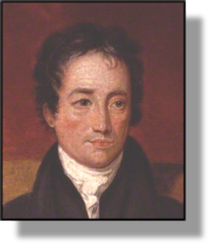 xxxxxThe English writer Charles Lamb is best known for his Tales from Shakespeare, written specifically
for children, and his charming series entitled Essays
of Elia, a rambling set of observations on commonplace
events, experienced during his own lifetime. He was also, however,
an outstanding literary critic, and produced a number of valuable
works of criticism, particularly on Elizabethan drama in general and
Shakespeare’s tragedies
in particular.
xxxxxThe English writer Charles Lamb is best known for his Tales from Shakespeare, written specifically
for children, and his charming series entitled Essays
of Elia, a rambling set of observations on commonplace
events, experienced during his own lifetime. He was also, however,
an outstanding literary critic, and produced a number of valuable
works of criticism, particularly on Elizabethan drama in general and
Shakespeare’s tragedies
in particular.
xxxxxLamb was born in London
and attended the school at Christ’s Hospital. It was there that he
met his lifelong friends Samuel Taylor Coleridge and Leigh Hunt. On
leaving school at the age of 15, he began work as a clerk in the
accounting department of the East India Company, then in India
House, and he remained there until his retirement in 1825, over
thirty years later. Tragedy struck in 1796 when his sister Mary,
suffering from a mental disorder -
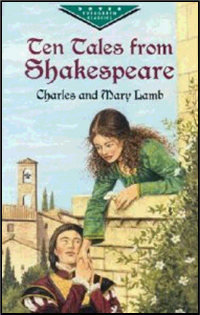 xxxxxHe began his literary career in the late 1790s when
some poems he had written -
xxxxxHe began his literary career in the late 1790s when
some poems he had written -
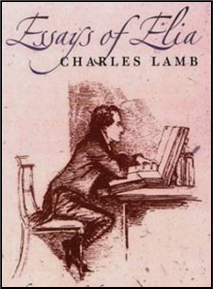 xxxxxBut Lamb’s greatest contribution to English literature
came in 1820 when he began to contribute a number of witty and
sometimes whimsical essays to The London
Magazine, founded that year. Written under the pseudonym
Elia, and produced over the next five years, they were later
published in book form as Essays of Elia
in 1823 and Last Essays of Elia ten
years later. Almost entirely autobiographical, the best of them deal
with episodes and experiences of childhood and adult life over half
a century. Written in a simple but attractive, charming style, they
are centred for the most part around the humdrum events of everyday
life, together with a little space for pathos and flights of fancy. Among the best known are South
Sea House, the first one produced, A
Dissertation on Roast Pig, Dream
Children, Mrs Battle’s Opinions on
Whist, The Supernatural Man, and
Christ’s Hospital. What is most notable
and refreshing is that these essays avoid all reference to subjects
that might disturb or offend, such as politics, religion, sex and
suffering.
xxxxxBut Lamb’s greatest contribution to English literature
came in 1820 when he began to contribute a number of witty and
sometimes whimsical essays to The London
Magazine, founded that year. Written under the pseudonym
Elia, and produced over the next five years, they were later
published in book form as Essays of Elia
in 1823 and Last Essays of Elia ten
years later. Almost entirely autobiographical, the best of them deal
with episodes and experiences of childhood and adult life over half
a century. Written in a simple but attractive, charming style, they
are centred for the most part around the humdrum events of everyday
life, together with a little space for pathos and flights of fancy. Among the best known are South
Sea House, the first one produced, A
Dissertation on Roast Pig, Dream
Children, Mrs Battle’s Opinions on
Whist, The Supernatural Man, and
Christ’s Hospital. What is most notable
and refreshing is that these essays avoid all reference to subjects
that might disturb or offend, such as politics, religion, sex and
suffering.
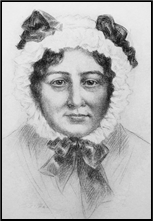
xxxxxIn 1825 Lamb retired on
the grounds of ill-
xxxxxLamb had a great deal of
personal charm and, despite a stutter, was a good conversationalist.
He contributed much to English literature but, above all, he was one
of the most able masters of the essay form. Apart from Coleridge and
Hunt, he numbered among his friends William Wordsworth, Robert
Southey, and, as we shall see, both William Hazlitt and John Clare.
And during the early 1820s he befriended the English writer De
Quincey, helping him to procure the publication of his famous work, Confessions of an Opium-
xxxxxIncidentally, the pseudonym Elia was thought by some to be a play on the words “I lie”, but it would seem that it was the name of a clerk employed at South Sea House, where his elder brother John was working. ……
xxxxx……
Inxthe production of Tales
from Shakespeare his sister Mary played a major part. She wrote the preface and the
comedies and histories. Lamb confined himself to the six tragedies,
but originally only his name appeared on the title page -
Including:
William Hazlitt
and John Clare

xxxxxThe English writer William Hazlitt (1778-
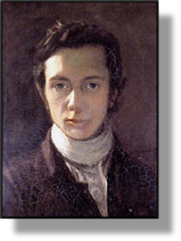
xxxxxHe was born in Maidstone but, as the son of a Unitarian preacher, spent his early years in Ireland and North America. On his return he attended the Unitarian seminary in Hackney for a time but, somewhat quarrelsome and moody by nature, he soon tired of this, and with the encouragement of his friend Samuel Taylor Coleridge, whom he met in 1798, he went to Paris to try his hand at painting. Failing to make headway as an artist, he then turned to the study of philosophy, and in 1805 produced his On the Principles of Human Action, a work which brought little return.
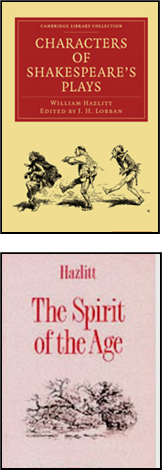
xxxxxThus by 1811, now a married man, he was finding it hard to make a living. However, it was in that year that he began writing for the London Morning Chronicle and very soon gained a reputation as a critic and essayist. Then as from 1817 he became more widely known and appreciated following the publication of two of his major works: The Round Table, a collection of 40 essays produced from articles he had written for Leigh Hunt’s Examiner, and his Characters of Shakespeare’s Plays, a work of outstanding merit which did much to renew interest in the subject. Then followed other critical works, based on his series of lectures on English drama. These included Lectures on the English Poets, Views of the English Stage, Essays on the English Comic Writers and, in 1821, Dramatic Literature of the Age of Elizabeth. Then four years later came his The Spirit of the Age (or Contemporary Portraits), considered by many to be his masterpiece. Penetrating in their analysis and trenchant in their style, these works were well received, and made him a leading critic in the English romantic period. However, his scathing comments resulted in a number of heated disputes and the loss of some of his friends who, at one time or another, included Coleridge, Lamb, Wordsworth, Shelley and Keats.
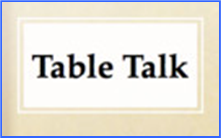
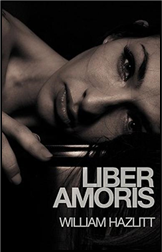 xxxxxBut from the early 1820s Hazlitt gave most of his time
over to essay writing, contained for the most part in his two famous
books Table Talk, published in 1821 and The Plain Speaker, produced five years later.
These essays were attractive not only for their width of interest -
xxxxxBut from the early 1820s Hazlitt gave most of his time
over to essay writing, contained for the most part in his two famous
books Table Talk, published in 1821 and The Plain Speaker, produced five years later.
These essays were attractive not only for their width of interest -
xxxxxIncidentally, a literary critic of outstanding ability, he believed that “a genuine criticism should reflect the colour, the light and shade, and the soul and body of a work”.
xxxxxThe English writer William Hazlitt (1778-
G4-
xxxxxA young poet who was
befriended by Charles Lamb was John Clare (1793-
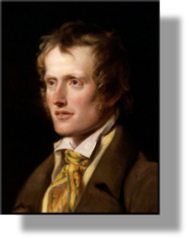 xxxxxA young English poet who was befriended by Charles Lamb
was John Clare (1793-
xxxxxA young English poet who was befriended by Charles Lamb
was John Clare (1793-
xxxxxHe was born at Helpston, near Peterborough, Northamptonshire, in 1793, the son of a farm labourer, and he was himself working in the fields at the age of seven. A shy, pensive lad, he soon showed his poetic gift, fed by his own observation of country life and the folk ballads told to him by his parents and other village folk. Dubbed the “Northamptonshire Peasant Poet”, his early verse, woven around the scenes of rural life, proved highly popular. Many were attracted by the simplicity of his lines, his deep love and understanding of nature, and the joy he found in the simplest of pleasures.
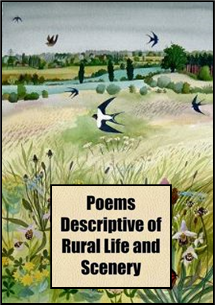 xxxxxOn the strength of this unexpected rise to fame he
visited London and, for a short time, mixed uneasily in literary and
upper-
xxxxxOn the strength of this unexpected rise to fame he
visited London and, for a short time, mixed uneasily in literary and
upper-
xxxxxBut his overnight success proved to be of short duration. His later volumes, such as Other Poems (1821), The Shepherd’s Calendar (1827), and The Rural Muse (1835), proved much less successful. The novelty of his work had run its course, and despite some generous patronage and his genuine lyrical talent, within a few years he was reduced to poverty. Unable to support his wife and seven children, he was obliged to return to the land and work once more as a farm labourer. The stress and strains of such a life took its toll, and he suffered a mental breakdown in 1837. His publisher obtained for him a place in a private asylum in Epping, Essex, but four years later he escaped and made his own way back to Northamptonshire, an incredible journey which he later recorded in prose. After some six months at home, he was certified insane and in 1841 was sent to an asylum in Northampton. He died there in 1864. Ironically, some of his most moving poetry was written in these last years of his life. One such poem, given below, gives some idea of his mental torment at that time.
I am! yet what I am who cares, or knows?
My friends foresake me like a memory lost.
I am the self-
They rise and vanish, an oblivious host,
Shadows of life, whose very soul is lost.
And yet I am – I live – though I am toss’d
Into the nothingness of scorn and noise,
Into the living sea of waking dream,
Where there is neither sense of life, nor joys,
But the huge shipwreck of my own esteem
And all that’s dear. Even those I loved the best
Are strange – nay, they are stranger than the rest.
I long for scenes where man has never trod – for
For scenes where women never smiled or wept – for
There to abide with my Creator, God,
And sleep as I in childhood sweetly slept.
Full of high thoughts, unborn.
So let me lie, -
The grass below; above, the vaulted sky.
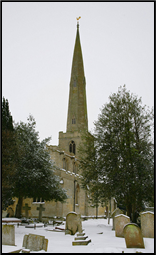
xxxxxIncidentally, in December 2004 the villagers of Glinton, Cambridgeshire, alarmed at a proposal by British Telecom to erect a phone mast near the parish church of St. Benedict, sent a letter of protest to BT and enclosed the poem Glinton Spire, composed by Clare in 1832. In this he described how the church’s “taper spire” predominated “over the level landscape and the mind”, making “common things around it glow with beauty not their own”. As a result, BT withdrew their application to build the mast, anxious to ensure that the church, a Grade One listed building dating from the 12th century, was not disturbed!


